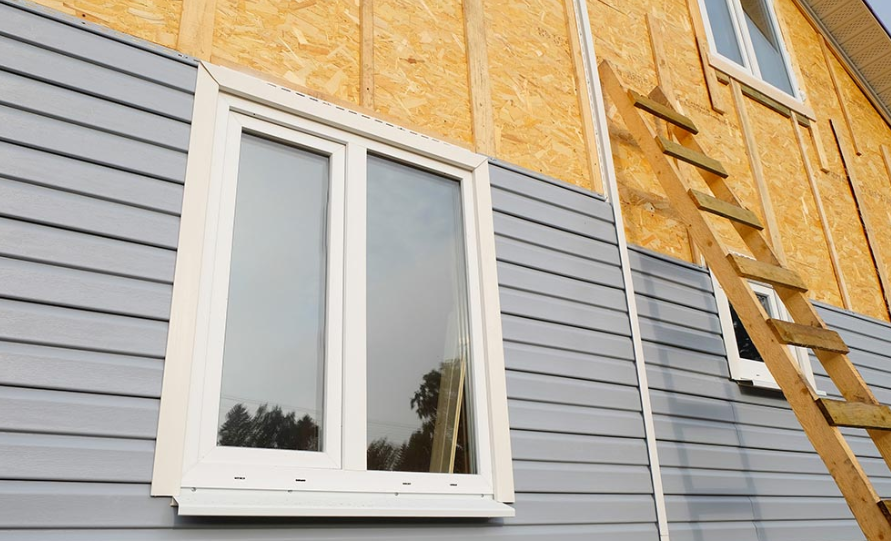Key Takeaways:
- Understanding various siding materials can help you make informed decisions.
- Each type of siding offers unique benefits and drawbacks.
- Proper maintenance ensures the longevity of your chosen siding material.
Table of Contents:
- Introduction to Home Siding
- Vinyl Siding
- Fiber Cement Siding
- Wood Siding
- Metal Siding
- Conclusion
Introduction to Home Siding
Choosing the right siding for your home is crucial for aesthetics and protection. The suitable siding material can elevate the look of your home while offering durability and minimal maintenance requirements. Consulting with a siding contractor can provide valuable insights tailored to your needs. Let’s explore some of the top siding options available today.
Beyond outward appearances, siding is pivotal in insulation and energy efficiency, contributing to your home’s overall comfort and cost-effectiveness. With numerous options on the market, it’s essential to understand the strengths and weaknesses of each material to make an informed decision.
Vinyl Siding
Vinyl siding is one of the most popular options due to its affordability and ease of installation. It comes in various colors and styles, making it versatile for any home design. Its ability to mimic the appearance of wood, stone, or even shakes while offering the benefits of synthetic materials makes it a top choice for many homeowners.
According to experts, with proper maintenance, vinyl siding can last up to 50 years, making it a long-term solution for many homeowners. This longevity and low maintenance requirements—typically just occasional cleaning with soap and water—enhance its appeal. Its resistance to pests and moisture further adds to its value proposition.
However, it’s important to note that vinyl siding can become brittle in extreme cold and may fade over time when exposed to harsh sunlight. Regular inspections and prompt repairs can mitigate these issues, ensuring it remains in good condition for decades.
Fiber Cement Siding
Fiber cement is known for its durability and resistance to various environmental factors such as fire and insects. It can mimic the appearance of wood or stone, providing a high-end look without extensive maintenance. This material is made from a mix of cement, sand, and cellulose fibers, which gives it exceptional strength and longevity.
Fiber cement siding is an excellent choice for homeowners looking for longevity and a robust exterior facade. Its ability to withstand harsh weather conditions without warping, rotting, or cracking makes it particularly suitable for areas with extreme climates. When considering durable and low-maintenance exterior options, fiber cement siding installed by experienced companies such as Sure Roofing and Siding offers an excellent choice for long-lasting protection and aesthetic appeal.
While fiber cement siding may have a higher initial cost than vinyl, its long lifespan and low maintenance needs can make it a more cost-effective option in the long run. Furthermore, it resists termites and other pests, providing peace of mind and aesthetic and protective qualities.
Wood Siding
Wood siding offers a classic, natural appearance with the benefit of customization through painting or staining. Whether you choose cedar, pine, or redwood, wood siding brings an unmatched warmth and character to a home, making it a beloved choice for many.
Wood siding’s ability to be customized with different colors and finishes allows homeowners to achieve a personalized look that can be updated over time. This flexibility is one of its most significant advantages, alongside its environmentally friendly credentials, as wood is a renewable resource.
- Pros: Natural beauty, customizable
- Cons: High maintenance, susceptible to pests
However, wood siding requires regular maintenance, including painting or staining every few years, and inspections for signs of rot, insects, or other damage. Homeowners must be prepared for this level of upkeep to maintain the beauty and integrity of wood siding over the long term.
Metal Siding
Metal siding, particularly aluminum and steel, is a durable and low-maintenance option. It’s trendy in modern architectural designs and offers excellent protection against the elements. Metal’s sleek, contemporary appearance can provide a unique aesthetic in any neighborhood.
One of metal siding’s most compelling advantages is its durability. It is resistant to fire, pests, and rot and can withstand extreme weather conditions without damage. Additionally, metal siding can be made from recycled materials, making it an environmentally friendly option.
- Pros: Durable, low maintenance
- Cons: Can dent, may rust
One potential drawback is that metal siding can dent, particularly if hit by heavy objects like hailstones. Additionally, while it generally resists rusting, scratches in the paint can lead to rust if not promptly repaired. Regular maintenance involves checking for and touching up any scratches or dents to maintain its pristine appearance.
Conclusion
When choosing siding for your home, consider factors like durability, maintenance, and aesthetic appeal. Each material—vinyl, fiber cement, wood, and metal—offers unique advantages that can enhance your home’s exterior. Making an informed choice ensures long-term satisfaction and curb appeal. Whether you prioritize ease of maintenance, natural beauty, environmental sustainability, or modern aesthetics, there is a siding option to meet your needs.
Ultimately, the best siding for your home will depend on your specific circumstances and personal preferences. Consulting professionals and doing thorough research will help you weigh the pros and cons of each material, ensuring a choice that enhances your home’s value and functionality for many years to come.

